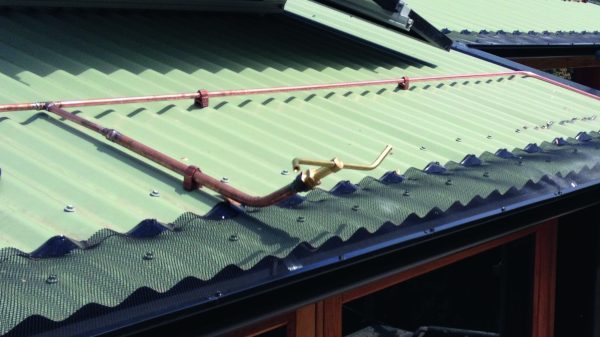Designing effective external sprinkler systems for bushfire‑prone homes
For bushfire prone dwellings a well-designed copper sprinkler system is cost effective and durable, writes John Fennell.
Building in protection from fire damage all year round is now a big issue.
The intensity of bushfires – and warnings of longer, hotter and drier summers to come – has heightened the need for careful planning.
This matter should be on the plumbing industry’s agenda, as home sprinkler systems get a lot more attention from the public, government, fire authorities and insurers.
Local councils are usually responsible for building approvals in bushfire-prone areas. However, approval must generally also be sought from the regional bushfire authority and/or a qualified bushfire consultant.
In NSW, for example, the Rural Fire Services document Planning for Bushfire Protection is a guide for council planners and owners when building in such locations.
This document deals with the type and size of water supply services, gas services, pumps, taps and hoses, as well as sprinkler systems, so plumbers need to understand the issues and be skilled in handling them.
Putting out fires
Australian Standard AS 5412-2012 Bush Fire Spray Systems specifies the guidelines for sprinkler systems, including flow rates and capacities.
Once again, plumbers should consult this document when developing or installing a sprinkler system.
There are many custom-designed sprinkler systems suitable for protecting homes against all bushfire risks. They are designed to completely cover the walls and roof with water sprays. Vulnerable areas such as decks, windows, gas bottles, etc, can also be given water coverage.
The amount of water and the correct sizing of pipeworks and pumps are subject to calculations to ensure the hydraulic performance of the system.
Mike Berghuis of Evolved Bushfire Protection recommends that all homes in bushfire-prone areas have an external water spray system to increase resilience to bushfires.
Such systems can be automated while also providing a haven for family members and fire services personnel in case of a rapidly approaching bushfire.
A sprinkler system constructed of copper pipe and mounted to the roof of a home is a great solution. Only metal pipes can be used in exposed areas, as plastic pipes do not maintain integrity when exposed to high temperatures.
It has been estimated that the basic design and installation of a fire sprinkler system for a small house is 7-8% of the building’s total cost.
Designs include a water storage tank to provide at least 30 minutes of supply, an appropriately sized diesel pump, a 40-50mm copper water service and several critically sited and calculated sprinkler heads.
An independent dedicated water supply is recommended so that manual operation of the system is not required.
The use of copper plumbing for fire applications is common sense, as it is the same material as used in the domestic water supply. The pipe size of the copper tube offers a superior flow rate while providing an excellent fire and pressure rating compared with other materials.
Ideally this is a job for skilled plumbers, but they should always seek advice from industry professionals such as a qualified bushfire consultant.
To find out more about the benefits of copper, visit copper.com.au
Evolved Bushfire Protection
evolvedbushfire.com.au

